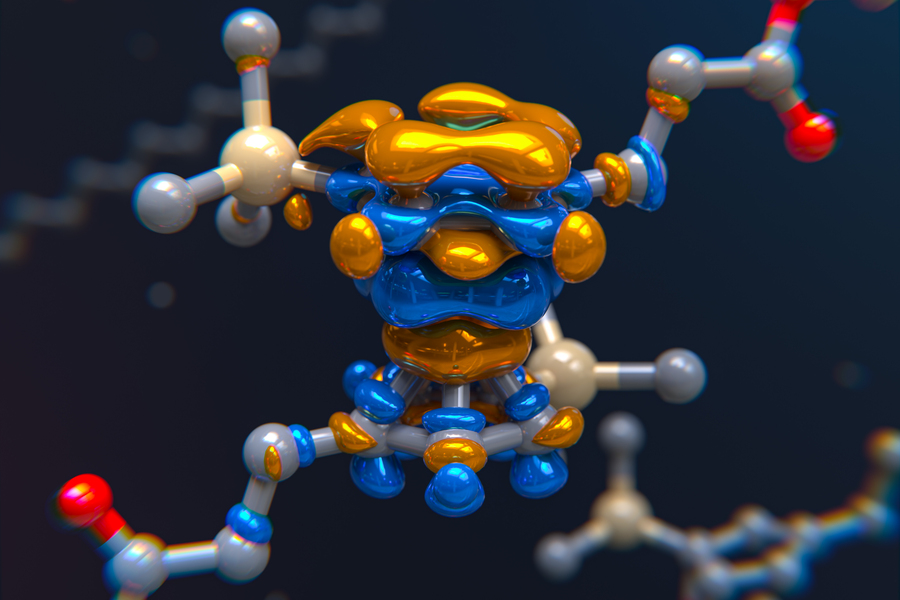A new strategy for strengthening polymer materials could lead to more durable plastics and synthetic fibres and cut down on waste, according to researchers at MIT and Duke University.
Using machine learning, the researchers identified crosslinker molecules that can be added to polymer materials, allowing them to withstand more force before tearing. These crosslinkers belong to a class of molecules known as mechanophores, which change their shape or other properties in response to mechanical force.
“These molecules can be useful for making polymers that would be stronger in response to force,” says Heather Kulik, Professor of Chemical Engineering at MIT. “You apply some stress to them, and rather than cracking or breaking, you instead see something that has higher resilience.”
Ferrocenes
The crosslinkers are iron-containing compounds known as ferrocenes, which until now have not been broadly explored for their potential as mechanophores. Experimentally evaluating a single mechanophore can take weeks, but the researchers used a machine-learning model to dramatically speed up this process.
They began with information from the Cambridge Structural Database which contains the structures of 5,000 different ferrocenes that have already been synthesized.
“We knew that we didn’t have to worry about the question of synthesizing, at least from the perspective of the mechanophore itself,” explains MIT postdoc Ilia Kevlishvili. “This allowed us to pick a really large space to explore with a lot of chemical diversity that would also be synthetically realisable.”
The researchers first performed computational simulations for about 400 of these compounds, allowing them to calculate how much force is necessary to pull atoms apart within each molecule. For this application, they were looking for molecules that would break apart quickly, as these weak links could make polymer materials more resistant to tearing.
Expanded database
They then used this data, along with information on the structure of each compound, to train a machine-learning model. This model was able to predict the force needed to activate the mechanophore, which in turn influences resistance to tearing, for the remaining 4,500 compounds in the database, plus an additional 7,000 compounds that are similar to those in the database but have some atoms rearranged.
The researchers discovered two main features that seemed likely to increase tear resistance. One was the interactions between the chemical groups that are attached to the ferrocene rings and the second was the presence of large, bulky molecules attached to both rings of the ferrocene which made the molecule more likely to break apart in response to applied forces.
While the first of these features was not surprising, the second trait was not something a chemist would have predicted beforehand, and could not have been detected without AI, the researchers say.
Tougher plastics
Once the researchers identified about 100 promising candidates, the lab of Stephen Craig, a professor of chemistry at Duke, synthesised a polymer material incorporating one of them, known as m-TMS-Fc. Within the material, m-TMS-Fc acts as a crosslinker, connecting the polymer strands that make up polyacrylate, a type of plastic.
By applying force to each polymer until it tore, the researchers found that the weak m-TMS-Fc linker produced a strong, tear-resistant polymer. This polymer turned out to be about four times tougher than polymers made with standard ferrocene as the crosslinker.
“That really has big implications because if we think of all the plastics that we use and all the plastic waste accumulation, if you make materials tougher, that means their lifetime will be longer,” says Kevlishvili.
The researchers now hope to use their machine-learning approach to identify mechanophores with other desirable properties, such as the ability to change colour or become catalytically active in response to force. Such materials could be used as stress sensors or switchable catalysts and could also be useful for biomedical applications such as drug delivery.
“Transition metal mechanophores are relatively underexplored, and they’re probably a little bit more challenging to make,” Kulik says. “This computational workflow can be broadly used to enlarge the space of mechanophores that people have studied.”
The research was funded by the National Science Foundation Center for the Chemistry of Molecularly Optimized Networks (MONET).
www.MIT.edu
